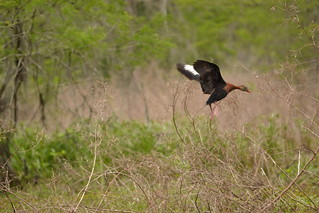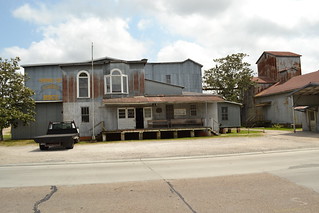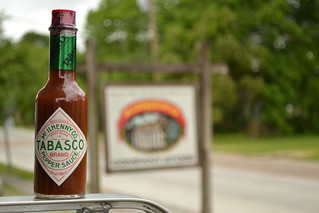We leave the hotel parking lot with temperatures in the low 70’s and broken overcast skies. Heading south out of Breaux Bridge at 8:30 a.m., our destination is Lake Martin Swamp for a look at the local wildlife with the assistance of Shawn of Cajun Country Swamp Tours. The first tour of the day starts at 9:00 a.m. and we arrive about 10 minutes early. The rendezvous point is a gravel parking lot on the east side of the lake. The parking area has no services, so bring a strong bladder or leave your modesty at home. The tour is conducted in a small aluminum boat that will hold maybe 12 people, with Shawn manning a 40 HP outboard on the stern. Once all seven scheduled customers arrive, we set off for a two hour tour of Lake Martin and the surrounding swamp. Shawn has a wealth of information of the local flora and fauna and does a fine job pointing out lots of wildlife I’d never spot on my own. Plenty of alligators are seen along with countless birds. And no mosquitoes! The explanation being that the bountiful dragonfly population keeps them at bay. The trip is well worth the $20 investment. According to Shawn, there are some parasitic tour operators that are glomming off their success by using a similar business name. If you go, be sure it’s Butch (his father) or Shawn running the show.
After the tour, we set our sights on lunch at Bon Creole Lunch Counter in New Iberia, La.. Wow! This place looks like a real hole-in-the-wall with no windows and a faded wildlife mural painted on the facade. I had a hankering for a po’ boy (basically the Louisiana version of a submarine sandwich) and opted for a seafood combination of half fried oyster and half fried crawfish tails. My riding partner elected for a half sandwich of fried shrimp. The sandwich was good but not remarkable. The bread was fresh and the seafood plentiful though I thought the oysters were a little earthy. The po’ boy at Felix’s Restaurant and Oyster Bar in the French Quarter of New Orleans is more memorable. No complaints, however, on the portions served at Bon Creole. If you get the whole sandwich as I did, bring your appetite. I needed a gurney to get back to the parking lot.
One mile west of Bon Creole is the Konrico Rice Mill. Entering their company store, we pay a $4 fee for a tour of the adjacent milling operation. The tour starts with a 15 minute slide show history of the Acadianas (interesting) in a small room furnished with six rows of old church pews. Boxes of various product are stacked against the walls. A 15 minute walk-through of the milling operation follows. Being the oldest belt driven mill in the country, all their equipment are functional antiques.
Leaving the rice mill, we rode six miles southwest of New Iberia to Avery Island. Not an island in the traditional sense of the word, Avery Island is a geographical dome of rock salt pushed up to an elevation of 163 feet above sea level – practically a mountain in these parts. Similar to an iceberg, only a tiny portion of salt is above ground. Extending below, the reserves are said to be as deep as Mount Everest is tall. It is the largest of five such salt domes along the Louisiana coast. Known as a source of pure salt for thousands of years, it wasn’t until 1862 that large scale mining operations began. A key source of salt for Confederate forces, the operation was subsequently attacked and destroyed by the Federal army. In 1899 the mines were replaced in favor of quarrying. After over a century of operations, vast reserves remain. The Avery Island salt operations are not open for tours.
Around the same time that mining operations began, Edmund McIlhenny obtained seeds of the Capsicum frutescens plant: more commonly known as the cayenne pepper. Believed to be indigenous to Central America, the seeds thrived in the Avery Island soil. Intrigued by the taste, he grew his first commercial crop in 1868. The following year he sold 658 bottles of hot sauce for $1 each. He named his product Tabasco and it’s been a household name ever since.
Paying a one dollar toll to enter the island, the subtle yet unmistakable scent of Tabasco fills your nostrils about three hundred yards from the facility. Parking at the visitors center, we took a free tour of the factory. The tour shows a 10 minute film on the history and process of making Tabasco, which is made nearly the same today as it was in 1868. Ripe peppers are ground and mixed with Avery Island salt and the mash is then placed in oak barrels to ferment for three years. The mash is then mixed with vinegar and allowed to rest an additional 30 days. Finally, the fiery sauce is drained, filtered and bottled. The exit doors of the theater open to an aisle way where the bottling facility can be viewed through a glass wall. The facility fills hundreds of thousands of bottles each day for export to over 160 countries and territories.
We then hit the gift shop where there are more Tabasco branded items than I thought possible. I picked up a 499 gram (1.1 lbs) container of Avery Island salt for $7.95. I’ll estimate the container is about 500 CC in volume. Seems a little pricey – let’s check. Avery Island covers about 2,200 acres (3.4 square miles) and the salt extends 5.5 miles into the earth. That’s 18.7 cubic miles of salt.
- There are about 56.6 containers / cubic foot of salt
- 1 cubic mile = 147 billion cubic feet
- 18.7 cubic miles = 2.75 trillion cubic feet
- That’s about 155 trillion containers of salt
- At $7.95 / container, bring a check for $1.24 quadrillion if you take their whole supply
Damn. Tax that at 1% and our national debt disappears.
The trip to Avery Island to simply see the Tabasco facility is not worth the drive. While the Tabasco facility is nice, the tour is a bit lame. There is no viewing of the pepper groves, no mashing of the peppers or tour of the warehouses where the barrels are stored for aging. It’s really just a short film (commercial) followed by a plate glass view of the bottling operation. Taking in the island’s gardens (separate fee) may make the trip worthwhile.
Our final destination of the day takes us north and west to Abbeville, Louisiana. Oyster lovers take note: Abbeville has three restaurants within short proximity of each other that are regarded as shrines to this tasty bivalve. Pulling into Dupuy’s gravel parking lot, with a healthy dose of smashed and ground oyster shells mixed with the aggregate, it was a positive sign. But there was only a lone car there. Oh oh. Approaching the door, a sign indicates they’re closed on Mondays. That’s OK. Immediately across the street is our number two shrine: Black’s Oyster Bar. But it looks even more abandoned than Dupuy’s. Turns out they’re out of business. Grrrr.
Well, third try’s the charm. A few hundred yards from the closed establishments is the open and lively Shucks! ![]() The building is modern with a paved lot. Inside is a long bar along one wall. Windows look over the parking lot and the back wall is covered in galvanized steel (a common material in these parts). Taking a seat, Abita Ambers on tap and a fried alligator appetizer were ordered while we decided on the menu choices. Abita Andygator was also available on tap but with the Amber at 4.5% ABV and Andygator at 8.0% ABV, it was a practical choice.
The building is modern with a paved lot. Inside is a long bar along one wall. Windows look over the parking lot and the back wall is covered in galvanized steel (a common material in these parts). Taking a seat, Abita Ambers on tap and a fried alligator appetizer were ordered while we decided on the menu choices. Abita Andygator was also available on tap but with the Amber at 4.5% ABV and Andygator at 8.0% ABV, it was a practical choice.
Still reeling from the wrecking ball eaten at Bon Creole, I was there to try the oysters on the half shell and not much else. So I selected a dozen bivalves while my friend chose a bowl of smoked duck and andouille gumbo. While waiting on the oysters and gumbo, I noticed a gentleman making the rounds and stopping to chat at the tables filled with customers. Our order soon arrives and the oysters look terrific. A generous size while not being too big, they’re served on a bed of crushed ice, lemon wedges, and a cup of fresh ground horseradish root. A variety of hot sauces are on the table. Cocktail sauce can be made to the individual preference by mixing the horseradish with tomato ketchup. I prepared my morsels by squeezing the juice of one lemon wedge over the lot of them. As I’m about to dig in, the gentleman shows and introduces himself as David Bertrand, one of the owners of Shucks! He advises I try one naked i.e. no condiments added. Oops, to late. He’s soon off to other tables to allow us to enjoy our meal. And the oysters are terrific. Extremely fresh and firm sitting in their own liquor at the bottom of each shell. They’re shucked perfectly with no nicks or mud noted.
Having eaten our food and enjoying a second beer, David comes back to ask how we enjoyed the meal. “Great.” But he almost broke out in tears when we informed him that we only had a bowl of gumbo and a dozen raw oysters. He insisted we try his mother’s 45 year old recipe for crawfish etouffee and scurried to the kitchen to secure a sample for the both of us. Delicious. To the point of my friend ordering a bowl. Then he described the five kinds of char-broiled oysters available and I’m soon enticed into trying two of each: an additional ten oysters. And again, David personally runs to the kitchen to place our order. David returns about ten minutes later with the bubbling hot oysters. But my mind is whirling and I’m about to go into shock. All of the day’s previous consumption has my gut looking like I’m going into my third trimester. So I’m not hungry in the slightest. But the presentation looks and smells irresistible and with my stomach screaming in protest, I proceed to chow down the ten best baked oysters of my life. Once David returns again, I heeped my praises and he then went and got us a taste of their homemade bread pudding topped with hot white chocolate buttered rum sauce. Unbelievably good.
Shucks! was an outstanding dining experience. Besides the fabulous food, David Bertrand is a prime example of how a business should be run. He’s actively engaged with his customers and does what he can to promote his product. The owners of Black’s should have stopped by and taken notes.








